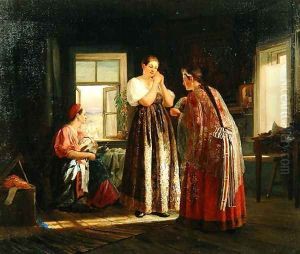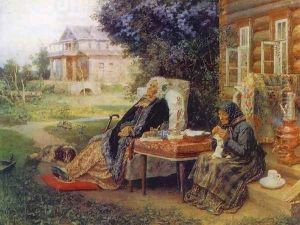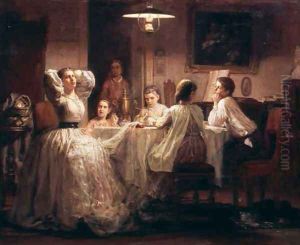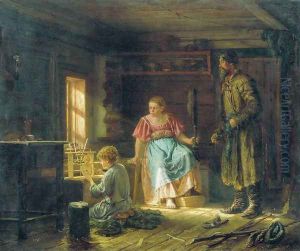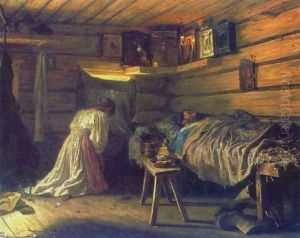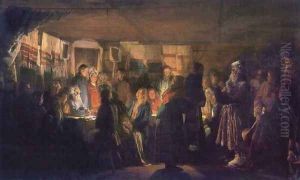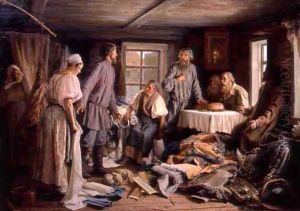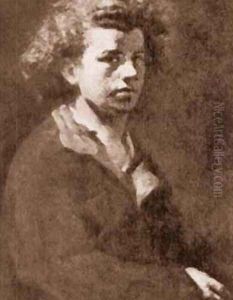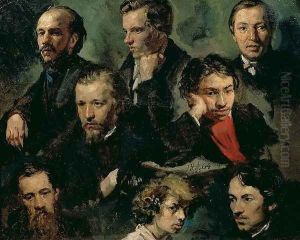Vasily Maximov Paintings
Vasily Maximov, born on September 28, 1844, in the village of Lopino in the Novgorod Governorate of the Russian Empire, was a significant Russian artist associated with the Peredvizhniki (Wanderers) movement, a group of realist painters who protested against the academic restrictions of the time. Maximov grew up in a peasant family, which deeply influenced the subjects of his art, as he often portrayed the lives and customs of Russian peasants with empathy and detail.
Initially trained at the St. Petersburg Academy of Arts from 1863 to 1868, Maximov was mentored by the Russian realist painter Pavel Chistyakov. Although he began his career following the academic tradition, Maximov's style evolved as he became increasingly interested in portraying the everyday life of the Russian peasantry. After his studies, he returned to his native village, where he immersed himself in the rural life that would become the hallmark of his work.
Maximov became a full member of the Peredvizhniki group in 1872, drawn to their ideology of social and artistic freedom. His commitment to the movement was not only ideological but also practical, as he participated in their traveling exhibitions that aimed to bring art to the people, particularly focusing on accessible themes and subjects relevant to the common folk.
His most famous work, 'They Did Not Expect Him' (1884), is emblematic of his oeuvre. It depicts the return of a political exile to his family, capturing the moment of surprise and emotional turmoil. This painting is often considered a highlight of Russian realist art and reflects Maximov's ability to encapsulate complex narratives and social issues within a single frame.
Maximov's dedication to the portrayal of peasant life was not only artistic but also personal. He believed that the Russian peasant class was the true heart of the country, and through his art, he sought to preserve and share the beauty and dignity of their existence. His paintings were marked by a keen observation of rural life, the changing seasons, and the traditional customs of the countryside.
Vasily Maximov continued to paint and participate in exhibitions until the end of his life. He passed away on May 8, 1911, leaving behind a rich legacy of works that offer a window into the rural world of 19th-century Russia. His paintings remain celebrated for their heartfelt representation of peasant life, their technical skill, and their contribution to the cultural heritage of Russia.
